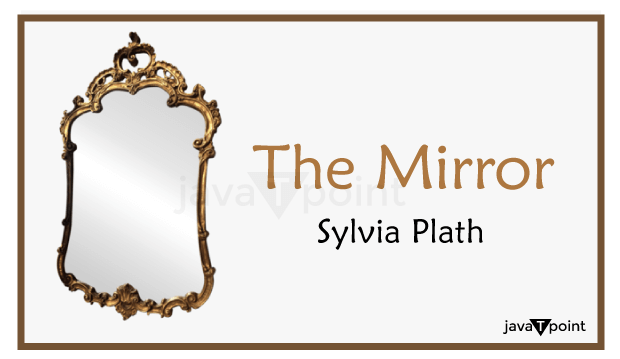Mirror SummaryIn this poetry, a mirror talks about itself and its owner, who ages while the mirror observes. First, the mirror calls itself "silver and exact." It simply ingests what it observes and reflects that image back without making any judgements. In contrast to popular belief, the mirror is "only truthful." It sees itself as the four-cornered eye of God, observing everything as it truly is. 
The mirror spends the majority of its time meditating on the pink-splattered wall across from it while it scans the empty room. It has spent so much time staring at that wall that it refers to it as "part of my heart." Only those who enter to look at themselves and the night-time darkness disturb the image of the wall. The reflection envisions itself as a lake. Looking into it, a woman tries to figure out who she truly is by observing her reflection. The woman sometimes loves to see herself in the moonlight or candlelight, yet these are "liars" since they conceal her genuine features. She can only see a true reflection of herself in the mirror, which is here represented by the lake. This honesty causes the woman to sob and clutch her hands. She can't help but check herself in the mirror repeatedly every morning, though. The woman has "drowned a young girl" in the mirror over the years, and now sees an elderly woman who is ageing faster and faster. Out of the mirror, an elderly woman approaches her like "a terrible fish." AnalysisThe wall mirror in what is probably a woman's bedroom serves as the narrator in this little but cherished poetry. The mirror has been personified or given human characteristics. It can detect monotony and makes a comment about the regularity of the wall it mostly reflects. Additionally, despite not passing judgement, it can see and comprehending its owner (the woman) as she struggles with the effects of ageing. This poem is not very challenging to analyse compared to many of the others in Plath's body of work. The topics are time and appearance, even though the speaker is a mirror. The woman acknowledges her ageing and daily struggle with the loss of her beauty. The lady frequently turns to the mirror for the truth, even though she occasionally fools herself with the seductive "liars" of candlelight and moonlight. Even though it frequently unnerves her and causes her to experience "tears and an agitation of hands," the lady depends on the mirror to provide her an accurate, unadulterated reflection of herself." It reminds me of the Greek story of Narcissus, in which a young man becomes so enamoured with his own reflection that he passes away. The mirror is aware of how significant it is to the woman. Some detractors have hypothesised that the woman's frustration extends beyond only her altering physical appearance. They contend that the woman is viewing her mind, soul, and psyche without any pretence or deception. She recognises the difference between her outward and inside existence when she sees her genuine self. She may be contemplating the difference between a "true" inner self and a "false" exterior self, in other words. Many commentators looked at Plath's various sides after her suicide in 1963, contrasting her polished, courteous, and decorous exterior with her furious, explosively creative interior. It's possible that Plath is examining this contrast in "Mirror." The poem's inevitable, deeper self, which can't help but confront the socially acceptable self, may be symbolised by the slick and unsettling "fish" in the poem. Even though the mirror expressly advertises itself as "silver and exact," the critic Jo Gill claims that "Mirror" feels obligated to instantly qualify itself. "As the poem develops, we see that this hermetic antonym may be a false front concealing the need for communion and dialogue," writes Gill. The mirror has a lot more power than it may initially appear to have because it rules and interprets its environment. It transforms the images it perceives for our understanding rather than just reflecting it. Due to the use of two symmetrical, nine-line stanzas that are indicative of conflict, Gill writes that the poem is catoptric, which means that it both describes and portrays its own form. According to Gill, the second stanza is important because it "exposes...the woman's need of the mirror and the mirror's need of the woman." The world is accurate, factual, and "exact" when all the mirrors can see is the wall, but when the lady enters the frame, the world is disordered, uncomfortable, complex, emotional, and vibrant. It follows that the mirror is "no longer a boundary but a limninal and penetrable space." It reflects its own aspirations and perceptions of the world rather than just an image. ConclusionIn general, "Mirror" is a sombre and even cruel poem that illustrates the conflicts between one's inner and outer personalities and highlights the eerily feminine "problem" of growing older and losing one's attractiveness.
Next TopicOde to Nightingale Summary and Analysis
|
 For Videos Join Our Youtube Channel: Join Now
For Videos Join Our Youtube Channel: Join Now
Feedback
- Send your Feedback to [email protected]
Help Others, Please Share









